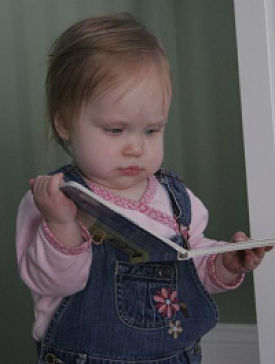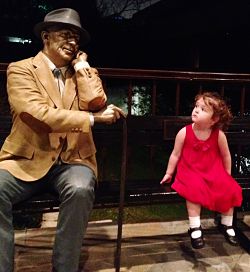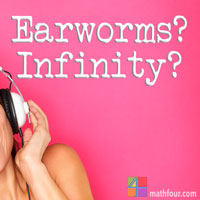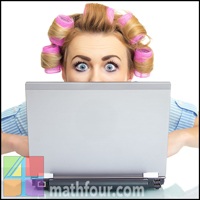I previously wrote about preschool math readiness after I found this list for preschool studies. There are many more preschool math concepts inside all the other subjects, too.
Here’s the list for reading readiness and how math is really a part of these!

Reading Readiness
Remembers objects from a given picture.
If a student can remember things that happened in previous problems in their math homework, they will make the connections faster. This remembering thing is huge in math!
Knows what a letter is.
This helps them to understand the difference between symbols with value (numbers) and sybols with no value (letters). Later they’ll be able to see that both letters and numbers can “signpost” things – like in an outline or the answer options on a test.
Has been read to frequently.
And count as many things in those books that you can!
Looks at books and magazines.
Make sure to include magazines like Time that have graphs and statistics in them.
Recognizes some nursery rhymes.
Great silly math one: “A dillar a dollar a 10 o’clock scholar – why do you come so soon? You used to come at 10 o’clock and now you come at noon!”
Identifies parts of the body.
The body is full of the symmetry and pairings. Not to mention patterns – like 5 fingers, 5 fingers, 5 toes, 5 toes.
Identifies objects that have a functional use.
Scissors cut things in half, glue allows you to add things.
Knows common farm and zoo animals.
Notice the pattern in the number of feet animals have. Also, if you multiply the number of animals by 4, you get the number of feet!
Pronounces own first name.
Identifying self helps to “name” things – in particular name a numeral with a word (like 2 is “two).
Pronounces own last name.
If a child has the same last name as one or both parents, you can point out that as a pattern.
Expresses self verbally.

This includes desires – so it’s a great opportunity to teach them to desire “three more,” and then count down. When they say, “one more,” they think it means “another” – unless they see they can go from three to two to one, etc.
Identifies other children by name.
Again – this is a forerunner to identifying the names of numerals.
Tells the meaning of simple words.
Number words are words too. Knowing the meaning of number words is important.
Repeats a sentence of 6-8 words.
When kids can repeat a sentence, they are ready to start repeating math facts. The sentence, “Four times eight is thirty-two” is pretty much a sentence of six words.
Completes incomplete sentence with proper word.
Can you say more math facts? Sweet!
Has own books.
And if some of these are counting books, how wonderful!
Understands that print carries a message.
This is the basis of equations too. An equation is a “printed” thing that means something, that has a message.
Pretends to read.
If your books also have basic math concepts, they can pretend to read those too.
Uses left-to-right progression.
Math is also read left to right.
Answers questions about a short story.
Include fun math stories and they can practice answering questions about those too.
Tells the meaning of words heard in story.
Use stories that have more than one of the same thing like two children – Hansel & Gretel – and Three Little Pigs. Discuss what it would change in the story if there were three children, or four little pigs.
Looks at pictures and tells a story.
If the pictures have multiples, they can use some counting and subitzing to explain what’s happening with those many objects.
Identifies own first name in manuscript.
Identifying manuscript letters is like identifying written numbers. It takes some time to see the differences between a 4 in print and a 4 in writing.
Prints own first name.
When they can do this, they also can print their phone number, zip code and street number.
What you can do
Notice that there’s math in so much – even toddler reading readiness. When you get your children ready for school – whether it’s homeschool or classroom school – you remind them that they are also doing math.
The more they hear that they’re doing math, the better they’ll be when the get into an “official” math class.
Got any tips? Share them in the comments!
Related articles
- Preschool Math Success
- Teaching Little Ones Math with the Toddler Counting iPhone App
- K12 Math Must-Have Games
- Early Childhood Math Teaching Tips Roundup

This post may contain affiliate links. When you use them, you support us so we can continue to provide free content!







